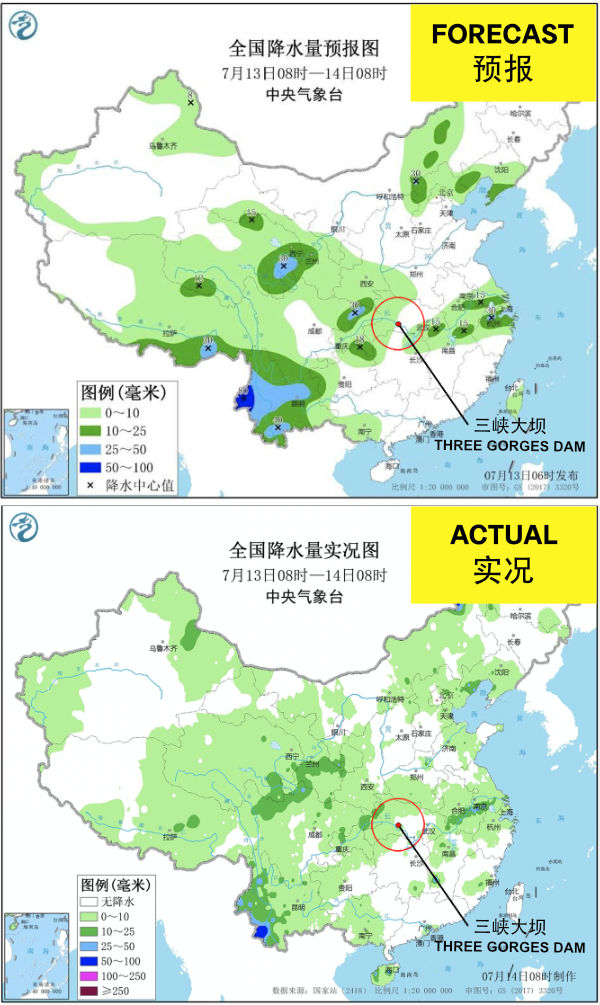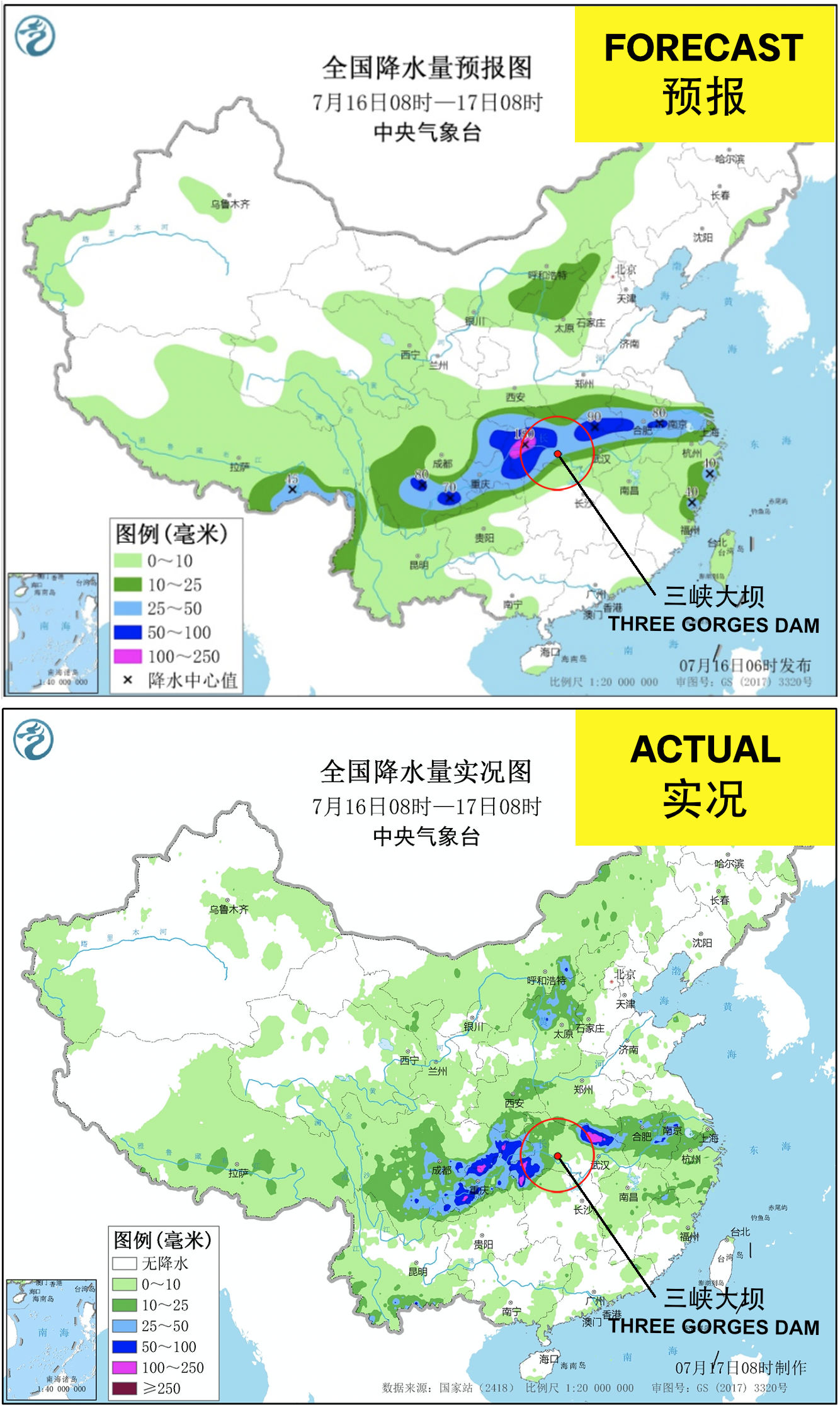Overview
Outcome
Rainfall across China and Japan were reduced as Kyrios redistributed rains as part of efforts to increase rainfall in Siberia to put out wildfires.
Crisis Situation
- China: Floods in 27 provincial regions killed 140 and relocated 1.7 million
- Japan: Floods and 123 mudslides across 18 prefectures killed 58 and relocated 870,000
- Siberia: Wildfires had burnt 9.26 million hectares, an area greater than Portugal, between Jan - Aug 2020
Timeline of Events
Skip to sectionAn extraordinarily intense plum rain season in 2020 brought catastrophic rainfall across China and Japan. In China, severe flooding resulting from continuous, torrential downpours since June caused widespread damage to many parts of China. As of 10 July 2020, the unforgiving flood in 27 provincial regions resulted in 140 deaths and obliterated 22,000 houses. More than 30 million people were affected and 1.7 million were relocated. The series of dams constructed along the Yangtze river basin–with its most important one being the Three Gorges Dam–had been built to control floodwaters, but the recent surge in rainfall proved to be a great challenge for this flood-control system.
Torrential rains also battered southwestern and central Japan since 4 July. Some regions recorded more than 410 mm of rainfall in a mere 24 hours, causing 59 rivers to overflow and 123 mudslides across 18 prefectures. As of 8 July, the disastrous floods and rains claimed the lives of 58 individuals, forced 870,000 residents to evacuate, and destroyed 4,000 homes. Prime Minister Shinzo Abe declared the event to be an “extraordinary disaster”.
Weather forecasts in Japan and China indicated that heavy rainfall would persist, meaning that more people could suffer and perish as the nation reeled from the crisis.
In the meantime, thousands of kilometres to the north of China and Japan, another crisis was taking place. It was a stark contrast as unusually warm and dry weather has caused wildfires to ravage Siberian forests. Temperatures in June reached a new record of 38°C on 20 June. Since the beginning of the year, over 9.26 million hectares of land has been impacted by wildfires. Russian weather services also reported that the wildfires this year were 9.6% greater than that of 2019 during the same period. Apart from the burning of boreal forests in the region, the northern tundra regions and carbon-rich peatlands were also set ablaze, releasing long sequestered carbon deposits into the atmosphere, intensifying the greenhouse effect and worsening global warming.
Premonitions of watery calamities
In the months preceding the floods, Kyrios received revelations foretelling the disasters.
On April 2020, Kyrios heard the following prophetic poem and forewarned that East China regions will be struck by a water-related calamity:
风云水转入沙尘,
天地水转入沙城,
海水急急破城墙,
万世众生淹水盖,
众生不理断失城,
紫霄云开洗怨恨,
万世众生死不明,
月亮消沉堕轨劫,
众生万浮永不生,
雨中沉心眼泪流,
众生不明何生存,
空睹众生愚世人,
枉负天父此用心。
When the catastrophic rainfall hit China in June-July 2020, Kyrios realised that the poem pertained to the floods in the Yangtze river basin. While Kyrios knows that the Three Gorges Dam is structurally sound, Kyrios felt that it was necessary to keep the dam and its surrounding regions safe from extreme rainfall, to prevent catastrophic harm to settlements along the river.
Following the premonition about China, on the night of 11 May 2020, Kyrios received prophetic visions about a disaster in Japan. The visions showed gigantic waves barreling towards Japan and 4 words “赤月剂光”, alluding to a water-related calamity upon the appearance of a crimson moon. In June 2020, a strawberry moon was observed by many all over the world, and on 4 July 2020, a downpour caused massive flooding and landslides in Kyushu, killing 60 people.
Kyrios maintained that the root cause of the intense plum rain event and Siberia’s disastrous wildfires lay in humanity’s greed and overexploitation of the Earth’s resources. Through environmentally damaging human activities, especially the burning of forests, humanity has severely damaged the thermoregulating systems that also govern Earth’s weather and climate leading to global warming and extreme weather events with catastrophic consequences.
Kyrios attributed the unusually intense plum rain event in 2020 to be one of such events. As global warming led to glaciers and ice sheets melting around the world at an unprecedented rate, larger volumes of water in the oceans lead to more evaporation in our atmosphere, forming more rain clouds which are then dispersed all across the world.
Kyrios further emphasised that due to the proximity of the intense wildfires in Siberia to the Arctic regions, the fires had significantly accelerated the melting of polar ice caps by heating up the ocean waters and the atmosphere, in addition to releasing smoke and haze to the region. This combination will contribute to a quick rise in sea levels worldwide.
What Did Kyrios do to mitigate the situation?
Unlike past interventions where Kyrios’s sole focus was to bring more rain to put out wildfires, this time round, Kyrios was faced with two opposite types of extreme crisis happening at the same time – too much rainfall in China and Japan, and fires in Siberia.
A few days after Kyrios initiated intervention efforts on 10 July 2020 to reduce rainfall over the region surrounding the Three Gorges Dam and Japan, the wildfire situation in Siberia was brought to Kyrios’ attention on 13 July. Kyrios commented that since the amount of moisture in the atmosphere was already determined, if rainfall along the plum rain belt was to be reduced, it would then need to rain more heavily elsewhere. Redirecting some rain clouds from China and Japan towards Siberia would enable the accomplishment of two goals.
Upon taking action on 10 July 2020, Kyrios forecasted that between 10 to 16 July, rainfall will reduce in Japan and China, especially in the area around the Three Gorges Dam (三峡大坝) in Yichang, China. True enough, on the 12 and 13 July, there was markedly less rainfall compared to the weeks of incessant and heavy rains prior to intervention, giving China a much needed respite from rapidly rising floodwaters. Kyrios then continued to actively monitor and intervene in the rainfall across China till 24 July. The comparison between meteorological forecasts and actual rainfall data each day showed that Kyrios’ interventions had significantly reduced rainfall in the vicinity of the Three Gorges Dam for 2 consecutive weeks.
Intervention in China
Satellite data from NASA Worldview showing rainfall had significantly reduced across China between and .
Whereas for Japan, after a week-long effort of helping to shift a stalled rain front and reduce rainfall, Kyrios decided to cease intervention on 18 July 2020 upon news of Japan’s participation in a joint naval exercise with the US and Australia in the South China Sea. Kyrios does not want to intervene in the disasters of countries increasing military spending with intentions of provoking wars, as wars would only bring more suffering to people, which is contrary to Kyrios’ endeavours that aim to alleviate suffering.
Intervention in Japan
Satellite data from NASA Worldview showing rainfall before () and after () Kyrios' intervention. The stalled rain front above Japan immediately began to shift east upon intervention.
In Siberia, as an indirect intervention of alleviating heavy rains in China and Japan, Kyrios “borrowed” and redirected rains from the plum rain belt towards Siberia from 13 July 2020 onwards, and forecasted that the fires would be largely put out between August and October 2020. A month later, on 11 August 2020, Kyrios ceased active monitoring and intervention in Siberia after most wildfires were successfully extinguished. Kyrios assured that rains will continue to put out fires till October, thus ensuring Siberia’s 2020 wildfire season comes to a definitive end.
Intervention in Siberia, Russia
Satellite data from NASA showing wildfires in Siberia before () Kyrios' intervention and on the day () when Kyrios wrapped up the intervention.
Kyrios said that such efforts only amounted to a temporary relief because these disasters are symptoms of a greater problem: the disequilibrium of the Earth’s systems caused by human actions. The disasters in China, Japan, and Siberia in 2020 are strong evidence of this imbalance. Thus, Kyrios urged all nations to set aside their differences and focus on resolving the climate crisis rather than be mired in factionalism and conflicts in pursuit of personal gains.
















